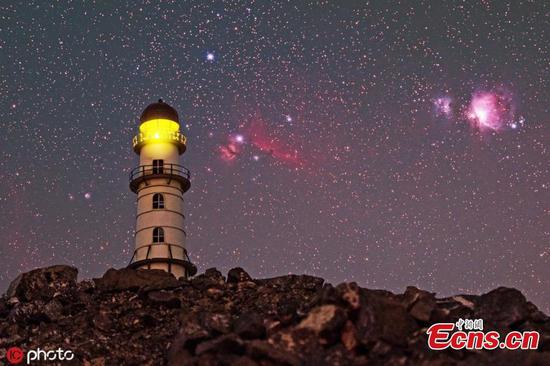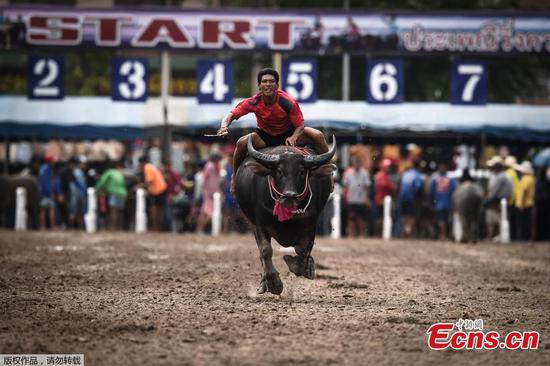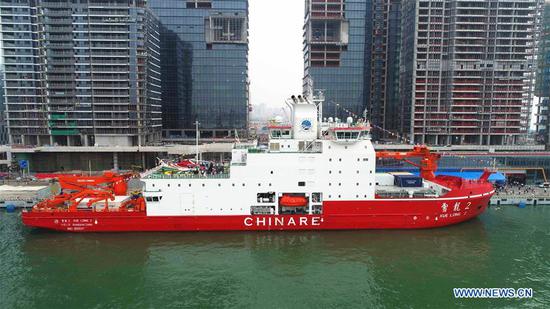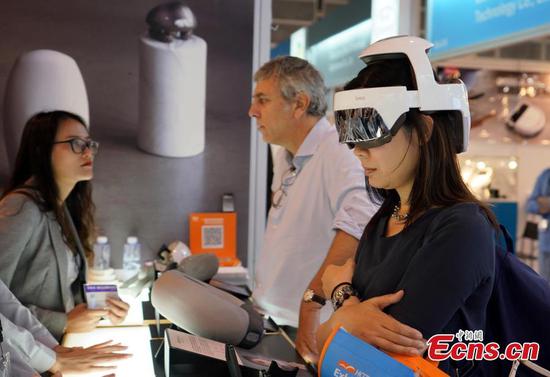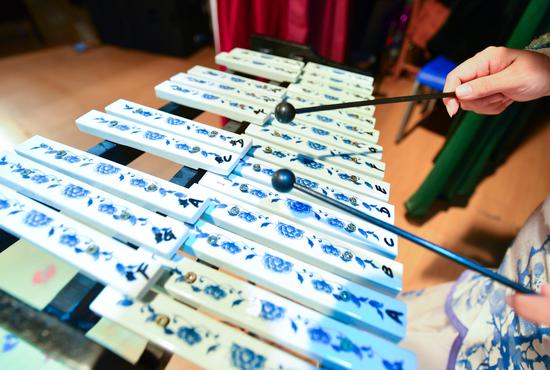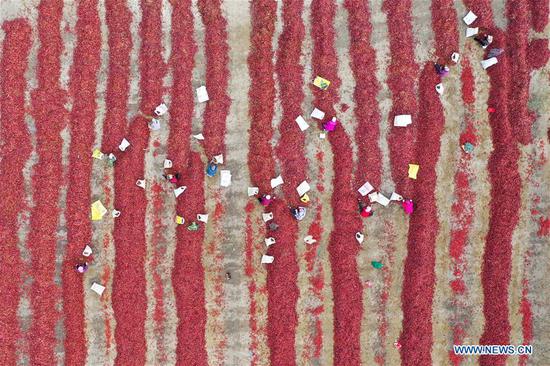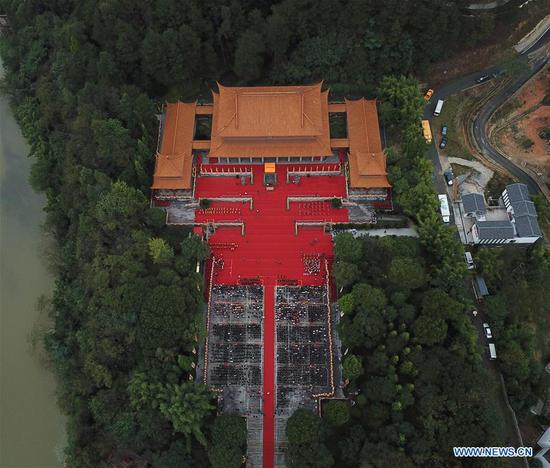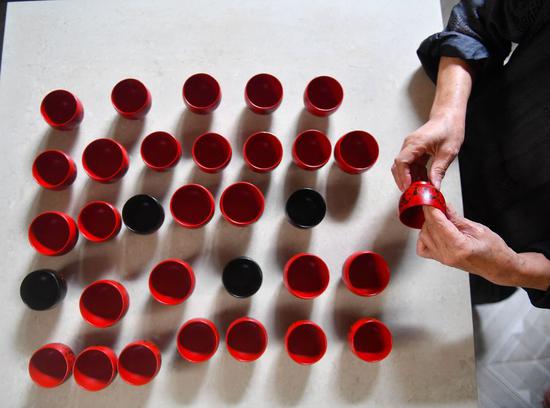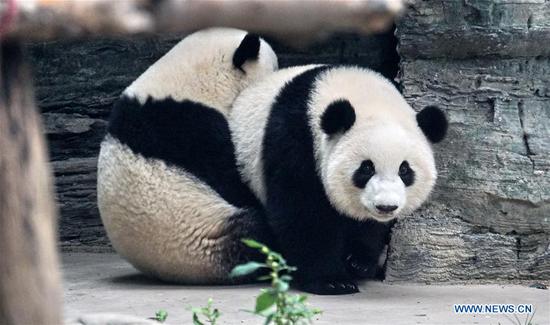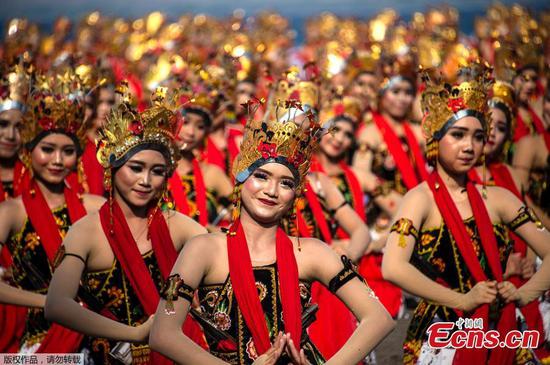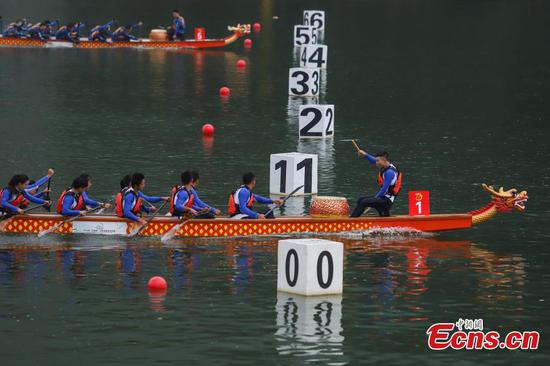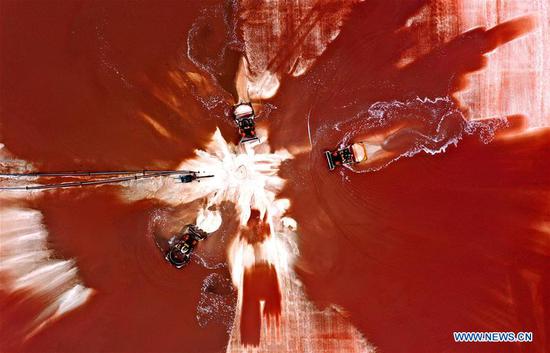
China launches a Long March 3B carrier rocket to place two Beidou navigation satellites into space at the Xichang Satellite Launch Center in Southwest China's Sichuan Province, on Sept. 23, 2019. (Photo/chinadaily.com.cn)
Report says spacecraft carrier will be bigger, stronger than Long March 5
The preliminary research on China's new generation of manned spacecraft-carrying rocket has concluded successfully, paving the way for the program's next steps, according to China Space News, the flagship newspaper in the country's space industry.
The newspaper reported recently that the research results were reviewed and approved on Wednesday by the China Manned Space Agency, which governs the nation's manned space activities. Experts from the agency said the results will be adopted in the research and development of the new carrier rocket, which has yet to be named.
According to the report, the new rocket is being designed at the China Academy of Launch Vehicle Technology in Beijing. Its main body will be 87 meters tall, which means it will be almost twice as tall as the Long March 5, currently the biggest of China's rockets.
The gigantic craft will boast liftoff weight of about 2,200 metric tons, nearly triple that of the Long March 5. This will enable the rocket to place a 25-ton spacecraft in a lunar transfer trajectory, the newspaper said.
Next, researchers and engineers will enter the detailed design phase and will continue to improve the rocket's technical plan, it noted.
China is making a grand road map for its manned lunar programs. However, the maximum carrying capacity of any existing Chinese rocket on a lunar transfer trajectory - the gateway for spacecraft to the moon - is only 8 tons, which is just enough for robotic missions. To fulfill manned missions, Chinese scientists have to develop a mightier rocket to transport the country's new-generation manned spacecraft, the newspaper explained.
Hu Xiaojun, a rocket researcher at the China Academy of Launch Vehicle Technology, said earlier that over the long term the new rocket will be used in conjunction with the Long March 9 - a rocket that is also under development at his academy and that will be China's most powerful rocket - to transport construction materials to the moon for a permanent base.
Officials and space scientists have said that the nation has a plan to place Chinese astronauts on the moon and even establish scientific facilities there.
Xing Qiang, an independent researcher and founder of Micro-Rocket Union, a nonprofit space research organization in Beijing, said the overall design of the unnamed rocket - a 5-meter-diameter main body connected to several 5-meter-diameter boosters - will test Chinese researchers' expertise in rocket structure and control because such a design is subject to a lot of technological and engineering challenges.
"But it is necessary for China to develop a new rocket for manned missions because such a rocket will offer us a new option, besides the Long March 9, for future explorations to the moon or other deep-space destinations," he said.
"And compared with the Long March 9, it will have lower costs and can enter service earlier."
According to the designers' plan, a Long March 9 will be capable of lifting 140 tons of payload into a low-Earth orbit or a 50-ton spacecraft to a lunar transfer trajectory. The 100-meter colossal machine will also be able to ferry 44 tons of payload to a Mars transfer orbit.
If the research and development proceed well, the Long March 9 will carry out its first flight around 2030, space officials said.









